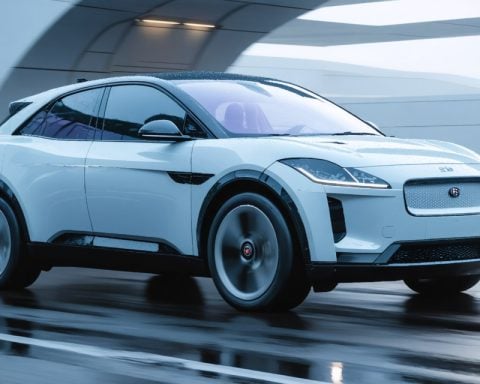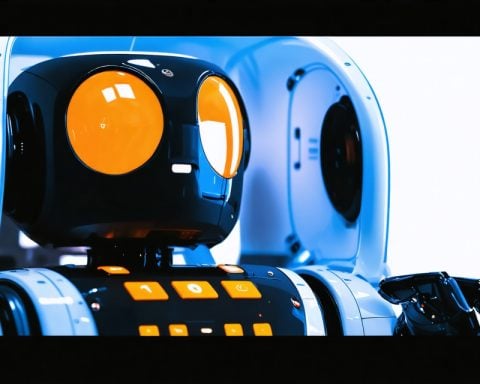- Waymo is testing self-driving cars in San Diego, focusing on technology refinement.
- Current tests aim to gather data for improving safety and ride quality.
- San Diego’s diverse environment is ideal for testing various driving conditions.
- Commercial self-driving services are not yet available; public access is still pending.
- The initiative represents a significant step towards the future of autonomous transportation.
Waymo is shaking things up in sunny San Diego with its latest round of self-driving car test drives! While this exciting innovation promises a glimpse into the future of transportation, don’t expect to hail a self-driving ride just yet. Currently, Waymo is focused on refining its technology, ensuring that their vehicles are ready for the open road.
Imagine gliding through the picturesque coastal streets in a sleek, autonomous vehicle, with the ocean breeze in your hair and no steering wheel in sight. While this scenario may be just around the corner, Waymo is taking a cautious approach by only testing its cars for now. The company aims to gather invaluable data and insights, setting the stage for a safer, smoother ride when they do launch commercial services.
San Diego’s diverse landscape presents the perfect playground for Waymo, allowing engineers to tackle various driving scenarios—city traffic, vibrant neighborhoods, and breathtaking coastal routes. The real question looms: When will the public get access to this cutting-edge experience?
For now, Waymo is committed to perfecting its technology before unveiling a full-fledged commercial service. The takeaway? While we’re on the cusp of a transportation revolution, self-driving cars are still in the testing phase. Keep your eyes peeled; the future of travel is charging down the road, and with it, the promise of a hassle-free ride awaits!
Revolutionizing Transportation: Waymo’s Self-Driving Future in San Diego
Waymo’s Test Drive Adventure in San Diego
Waymo has embarked on an exciting journey of self-driving car test drives in San Diego, but despite the industry’s optimism, we aren’t ready to hail a driverless ride just yet. The company is diligently focused on refining its technology, aiming for the highest safety standards before launching commercial services.
Features and Innovations of Waymo’s Self-Driving Cars
1. Advanced Sensor Technology: Waymo vehicles are equipped with state-of-the-art sensors, including LiDAR, cameras, and radar systems, allowing for 360-degree awareness of the surroundings. This technology enables the vehicle to detect objects from a significant distance, ensuring safety and precision driving.
2. AI-Driven Navigation: The autonomous driving system utilizes sophisticated AI algorithms to learn from various driving conditions. This learning process enhances the vehicle’s adaptability to dynamic environments, whether in bustling city traffic or serene coastal routes.
3. Real-Time Data Processing: Waymo’s vehicles process real-time data to make instantaneous decisions, a crucial requirement for navigating complex situations such as pedestrians, cyclists, and other vehicles.
Market Forecast and Predictions
As Waymo continues its testing in San Diego, industry analysts predict that full deployment of self-driving services could occur within the next few years, contingent on regulatory approvals and technological advancements. The San Diego tests are expected to provide valuable data that could expedite the transition to commercial autonomous vehicles.
Limitations and Challenges
While the future looks promising, several limitations and challenges remain:
– Regulatory Hurdles: As self-driving technology progresses, legal frameworks must evolve to ensure safety and accountability.
– Public Acceptance: Gaining public trust in autonomous vehicles is crucial; ongoing education and transparency about safety measures will be essential for widespread adoption.
– Technical Issues: Autonomous systems must overcome technical challenges related to environmental conditions, such as rain, fog, or construction zones.
Use Cases and Applications
Beyond personal transportation, Waymo’s self-driving technology has potential applications in various sectors:
– Ride-Hailing Services: Companies can integrate Waymo’s technology into their platforms, offering consumers seamless transportation options.
– Logistics and Delivery: Autonomous vehicles can transform goods delivery, ensuring efficiency and reducing operational costs.
– Public Transportation: Incorporating self-driving buses or shuttles can enhance public transport systems, making them more efficient and accessible.
Security Aspects and Sustainability
Waymo is committed to ensuring cybersecurity throughout its autonomous systems, protecting data integrity and user privacy. Additionally, the use of electric self-driving vehicles supports sustainability goals, aiming to reduce carbon emissions and promote eco-friendly transportation solutions.
Important Questions About Waymo’s Self-Driving Cars
1. When will Waymo launch its commercial services for self-driving cars?
While a specific timeline has not been announced, industry insiders suggest that if testing proves successful, commercial services could be available within the next few years.
2. What safety measures are in place during Waymo’s testing phase?
Waymo prioritizes safety by conducting extensive simulation tests, refining its technology in controlled environments, and gathering real-time data from live test drives to enhance the system’s reliability.
3. How does Waymo plan to handle legal and regulatory challenges?
Waymo engages with lawmakers and regulatory bodies to shape policies surrounding autonomous vehicles, aiming to establish rigorous safety standards and get necessary approvals for wider deployment.
For more insights on autonomous vehicle technology and developments, visit Waymo.













